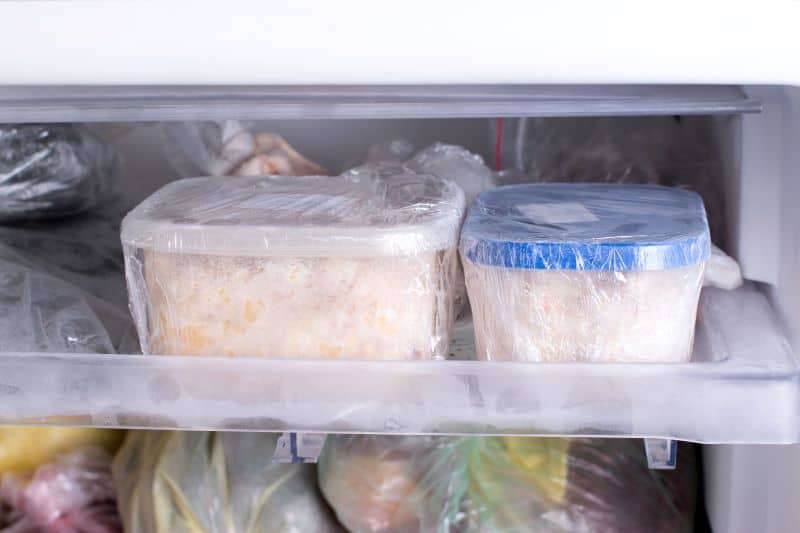Rice 🍚 is a staple in households around the world, found in cuisines from every continent, from Asia to Africa, to Latin America and beyond. Whether you’re cooking a quick dinner or preparing a large batch for meal prep, it’s easy to assume that once your rice is cooked, it’s good to go. But here’s the catch—improperly storing cooked rice can lead to serious health risks that many people aren’t aware of. The issue is not with the rice itself, but how it’s stored after cooking.
In fact, one of the most commonly overlooked health hazards in kitchens is Bacillus cereus, a bacterium that can thrive in improperly stored rice. But don’t worry, I’m here to explain why rice can become dangerous, how to handle it correctly, and how to make sure your leftovers stay safe and delicious.
The Dangers of Improperly Storing Cooked Rice 😱
After cooking rice, you might think it’s fine to leave it on the counter to cool down before popping it in the fridge. But this seemingly harmless practice can quickly turn dangerous. When rice cools slowly or isn’t stored properly, Bacillus cereus can multiply and release toxins that are not destroyed by reheating.
Bacillus cereus is a common bacterium found in rice. Although it’s present in uncooked rice, it is often killed during the cooking process. However, if the rice is left out at room temperature for too long, the bacteria can grow and produce toxins that can cause food poisoning.
Symptoms of Bacillus cereus food poisoning usually appear within 1-5 hours after consumption. These symptoms include:
-
Nausea 🤢
-
Vomiting 🤮
-
Abdominal pain
-
Diarrhea 💨
Even though the rice may still smell and taste fine, it doesn’t mean it’s free from harmful toxins. This is why it’s so crucial to store it the right way.
The Right Way to Store Cooked Rice: Key Steps to Follow ✅
To ensure that your rice is safe to eat and prevent any potential health risks, follow these essential steps:
-
Don’t let the rice cool on the counter for more than 1 hour. ⏳
The bacteria that cause food poisoning thrive in temperatures between 40°F and 140°F (4°C – 60°C). Therefore, it’s crucial to cool rice quickly. Letting it cool for more than 1 hour at room temperature can increase the risk of bacterial growth. -
Cool the rice quickly by spreading it out. 🧊
Once the rice is done cooking, immediately spread it out on a wide tray or in a shallow container. This will help it cool much faster, preventing the bacteria from multiplying. Avoid leaving rice in a large, tightly packed bowl, as it will take longer to cool down. -
Store the rice in an airtight container and refrigerate it. ❄️
After the rice has cooled (within the 1-hour window), transfer it into an airtight container. Place it directly into the fridge to keep it safe. Do not store it at room temperature, as this can promote bacterial growth. The fridge should be kept at or below 40°F (4°C). -
Consume within 24 to 48 hours.
Leftover rice should be eaten within 2 days. After that, the risk of contamination increases significantly. Even if it looks and smells fine, it could still harbor bacteria that are dangerous to your health. -
Reheat thoroughly before eating. 🔥
When you’re ready to eat the leftover rice, ensure that it’s piping hot—above 70°C (158°F). This is important because while reheating can kill bacteria, it does not remove the toxins that may have already been produced by Bacillus cereus. Avoid reheating rice more than once to ensure it stays safe.
Key Facts to Remember 🧠
-
All types of rice are at risk. Whether you’re cooking white, brown, jasmine, or basmati rice, they all carry the same risk. Handle them in the same way.
-
Bacteria don’t change the smell or taste of rice. This is why you can’t rely on your senses to determine if rice is safe to eat. It may look and smell perfectly fine, but it could still be contaminated.
-
Reheating won’t get rid of the toxins. Bacillus cereus can produce heat-resistant toxins, which means reheating rice will not destroy them. Only proper storage and handling can keep the rice safe.
What About Freezing Rice? 🧊
If you want to keep rice for a longer period, freezing is a safe option. Here’s how you can freeze cooked rice for future use:
-
Cool it quickly. Follow the steps above to cool the rice within 1 hour of cooking.
-
Portion it out. Divide the rice into small portions. This way, you only defrost the amount you need without having to repeatedly thaw and refreeze the rice.
-
Use freezer-safe containers or bags. Make sure the container or bag you use is suitable for freezing. Label each container with the date to keep track of how long the rice has been frozen.
-
Store it for up to 1 month. Rice can last in the freezer for up to a month, but after that, its quality may decline.
When it’s time to defrost the rice, don’t leave it out on the counter. Instead, microwave it or reheat it in a pan until it’s steaming hot to ensure that it’s safe to eat.
Conclusion: Proper Rice Storage Equals Safe Meals 💖
As simple as it may seem, improperly storing rice can lead to serious health problems. However, by following these basic steps, you can avoid the risk of food poisoning and enjoy your favorite rice dishes without worry.
It’s not just about cooking well—it’s about storing your food properly, too! With these precautions, you can make sure that your meals remain safe, healthy, and delicious. 😊
Remember, a little effort in how you store rice today can save you from a foodborne illness tomorrow! So, next time you cook rice, be mindful of how you handle and store it to keep your family and loved ones safe.

